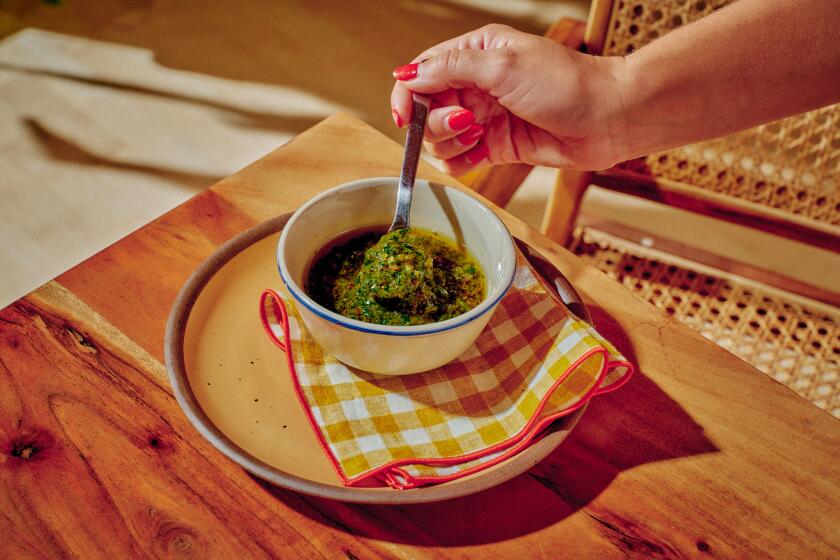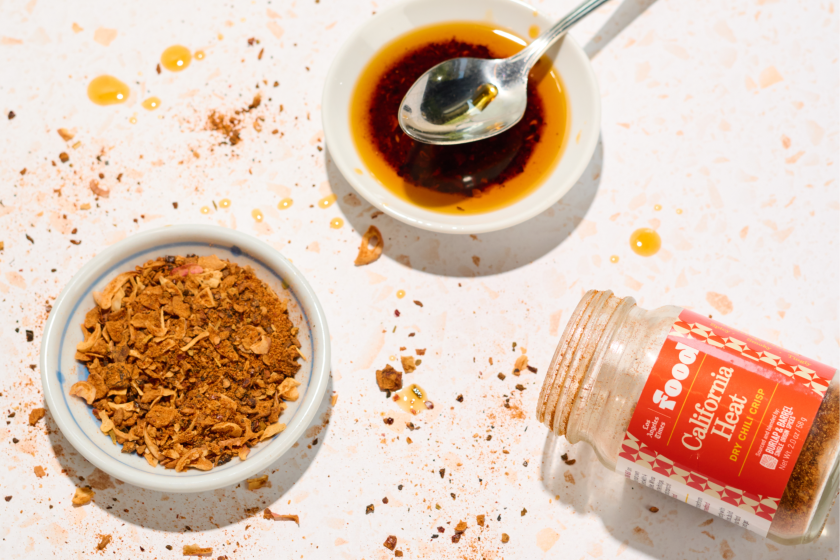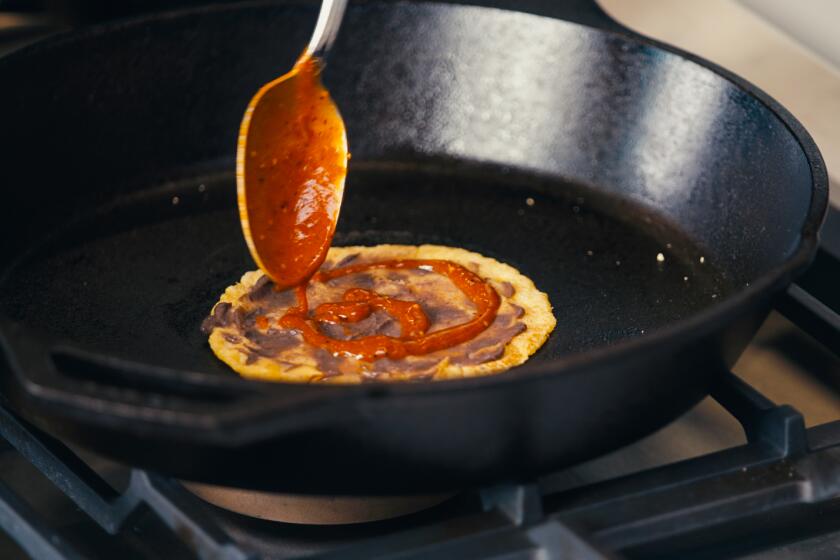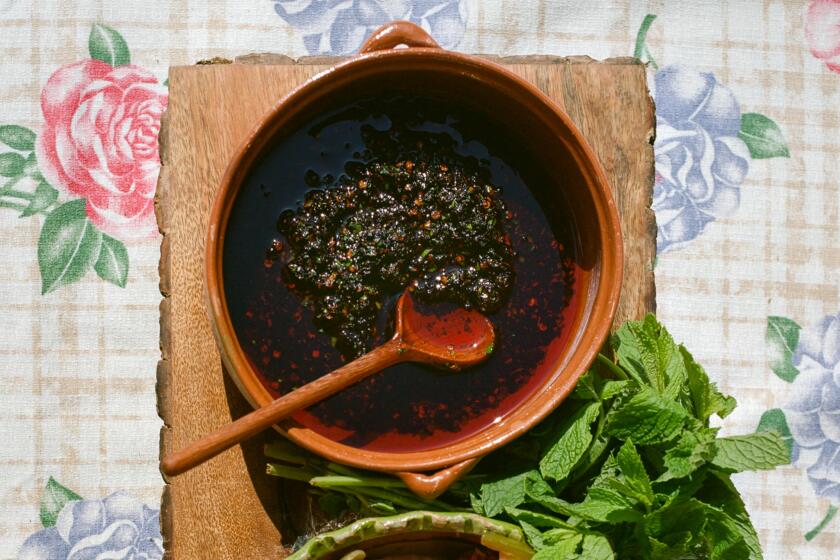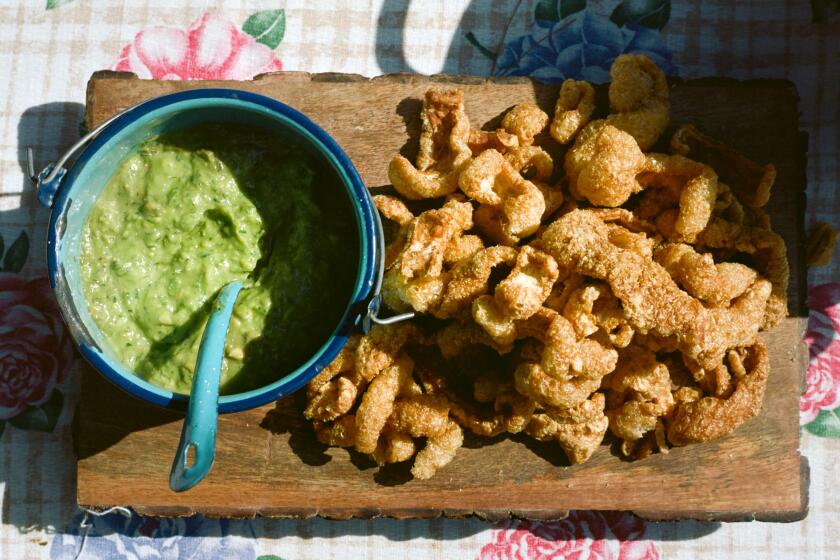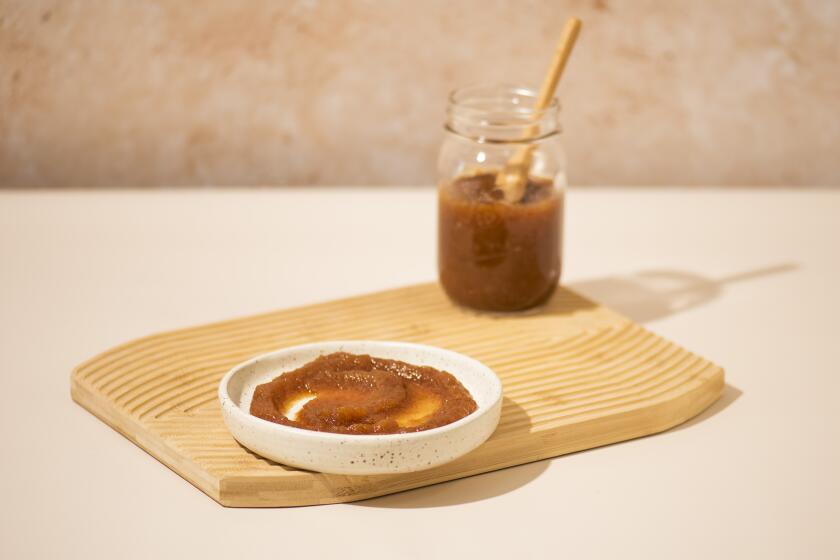Classic tapenade
- Share via
I am sitting in my office on this hot, still, Los Angeles afternoon, listening to the mockingbirds and thinking about the fact that in one week I’ll be in Provence. In many ways, this dry summer day is much like a day in the Luberon, the part of Provence that I know best. The sky is cloudless, bees are buzzing around the lavender that is blooming in my garden and in others up and down my street. And I have tapenade in my refrigerator.
Tapenade is made from ingredients that epitomize the flavors of Provence: capers, anchovies, garlic and olives. I’ve noticed that over the years chefs have become rather cavalier about naming just about anything that can be blended up, be it olives, sun-dried tomatoes or even figs, as tapenade. But a real tapenade must have those four elements.
Interestingly, the word does not refer to the olives that are its most prominent ingredient; it comes from the Provencal word for caper, tapeno (or tapero ). “These, preserved in vinegar, are crushed in a mortar, along with bay laurel, thyme, garlic, anchovies and black olives, then bound with olive oil and spiced with a little bit of rum,” says my French cookbook, “ L’Histoire et Recettes de la Provence et du Comte de Nice “ (“History and Recipes of Provence and the Region of Nice”) in its discussion of tapenade.
Other cooks of the region favor Cognac, and make it optional (as do I), and the seasonings vary. Lulu Peyraud, of Domaine Tempier in Bandol, uses only summer savory and does not add the mustard, thyme, rosemary or lemon juice that my recipe calls for. The goal is to achieve a balance of pungent and herbal flavors and to enhance the flavor of the olive.
The olives that you begin with will determine the nature of your tapenade. My favorite is the fleshy black Nyons olive from Haute Provence. It’s a brined olive, but not too acidic or metallic-tasting. These are almost impossible to get, so in California I usually make my tapenade with imported Greek olives. But I don’t use Kalamatas, because I usually find their flavor too briny, and with some exceptions, the flesh isn’t as tender as the French ripe olives I’m used to.
The closest in texture to a Nyons olive is the Greek Amphisa olive, which I have found in jars in supermarkets, and also in cans labeled “Greek Black Olives” from Trader Joe’s. These are much pinker than the dark black olives from France, so the color of the tapenade is not as appealing; but the flavor is good. You can also use a dark salt-cured olive, but the flavor will be less nuanced. The most important thing about the black olives you use is that they be imported, and not ripe California olives.
Although virtually all of my French cookbooks say that tapenade is made with black olives (and they don’t specify the type), I have tasted delicious green olive tapenades in markets all over Provence. I was a bit skeptical about green olive tapenade until I noticed a long line, one drizzly Saturday morning at the Apt market, in front of a sign that read “Les Delices du Luberon .” This is a group of artisans that makes several types of tapenade, as well as anchoiade , an anchovy paste, and sells them at markets throughout the region. They make a traditional black olive tapenade, and a black olive tapenade with tuna (which is also traditional), a green olive tapenade, a green olive tapenade with almonds and a green olive tapenade with tuna and basil.
“Larousse Gastronomique” defines tapenade as a Provencal condiment, which I find a very fitting description. Spread on a garlic crouton, tapenade makes the perfect appetizer, with just about any wine (given a choice, though, I’d opt for a chilled rose or something sparkling). But it can go beyond that, and in many directions. A standard item on my Provencal hors d’oeuvre plate is vegetables and hard-boiled eggs stuffed with tapenade. You blend up the hard-boiled egg yolks with the tapenade, and it’s scrumptious. Black olive and the tuna tapenades are best for this.
I also use it as an accompaniment for fish; grill, bake, steam or poach a white-fleshed fish like sea-bass and serve a generous spoonful of tapenade alongside. Or spread some on filets, wrap them in foil or parchment packages and bake.
Vegetarians should not deprive themselves of tapenade. I recently tested my classic recipe without the anchovies, to see whether it would be good enough to go into my next vegetarian cookbook. It was, definitely, terrific. It lacked the dimension that the anchovies give it, but vegetarians and those who don’t care for anchovies will appreciate this absence.
Tapenade has one more thing going for it: It keeps for weeks in the refrigerator. Just about everything that goes into tapenade is a cured food, so it’s no wonder that it keeps so well. Just keep a little bit of olive oil covering the top, and you’ll always be able to offer guests something wonderful.
Turn on a food processor and drop in the garlic. When it is chopped, turn off the machine and scrape down the sides. Add the olives, capers, anchovies, thyme, rosemary and mustard. Blend together until fairly smooth. Add the lemon juice, olive oil, a generous grinding of pepper and the Cognac and continue to blend until you have a smooth paste.
Scrape the tapenade into a serving bowl and garnish with the herbs. Refrigerate 2 hours until ready to serve.
Get our Cooking newsletter.
Your roundup of inspiring recipes and kitchen tricks.
You may occasionally receive promotional content from the Los Angeles Times.










